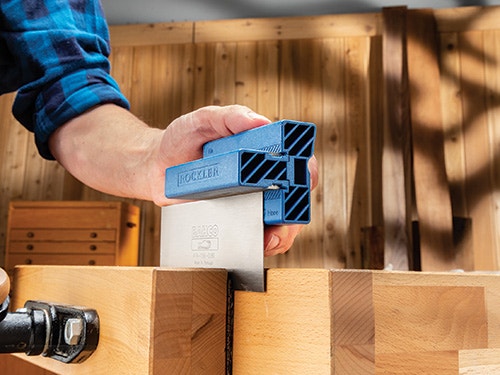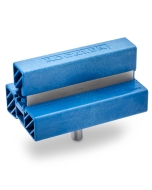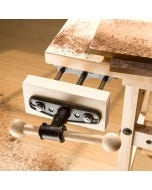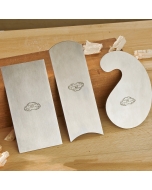3-in-1 Cabinet Scraper Sharpening Tool
This jig simplifies the process of filing, honing and burnishing card scrapers with all-in-one convenience.
Sharpening a cabinet scraper isn't particularly difficult, but the process will require three separate tools: a file (often installed in a holder to ensure that it's held squarely to the scraper's edge), a fine-grit sharpening stone and a hardened-steel burnishing rod. If you don't perform this routine maintenance on your scrapers very often, you'll also need to remember the correct order of operations for using those tools to sharpen effectively. It can make an otherwise quick task one you might tend to avoid, so your scrapers are only occasionally performing at their best.
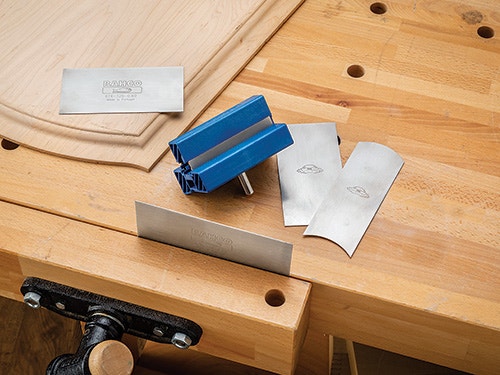
Rockler's innovative 3-in-1 Cabinet Scraper Sharpening Tool is designed to simplify the sharpening process in both regards. Its glass-filled nylon base is outfitted with all three tools you'll need for the job: a double-cut second file, a 2,500-grit diamond hone and a burnishing rod.
So you won't have to scrounge for the tools you'll need just to prepare for the task. The tool is also helpfully embossed with step-by-step reminders on each of its fences, including some diagrams — and this may be its greatest benefit. You don't have to remember the sharpening steps or search for the instruction sheet that comes with it. The tool is its own tutor!
Sharpening Made Easy
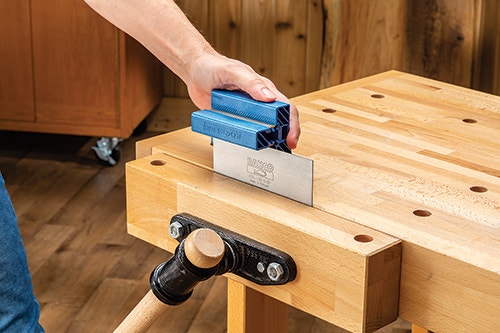
The first step to sharpening a scraper is filing a flat, square edge with the scraper clamped vertically in a bench vise (see Step 1). A square fence beside the tool's file is held against the face of the scraper, and 10 to 12 passes will remove the former edge as well as flatten it.
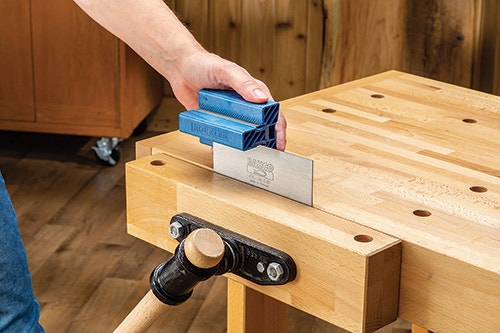
Flipping the 3-in-1 Cabinet Scraper Sharpening Tool over presents Step 2: honing. Here, tiny striations and other roughness left by the file's teeth can be smoothed away with several strokes of the diamond hone. The diamond grit also serves to sharpen both corners of the edge.
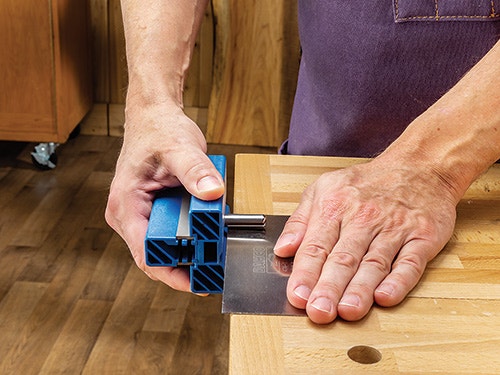
Laying the scraper flat on a work surface and turning the tool around to Step 3 enables you to draw out the scraper's corner beyond the edge. This happens by distorting the steel with the tool's hardened-steel burnishing rod. It creates the first stage of the micro-burr that does the actual cutting when the scraper is in use.
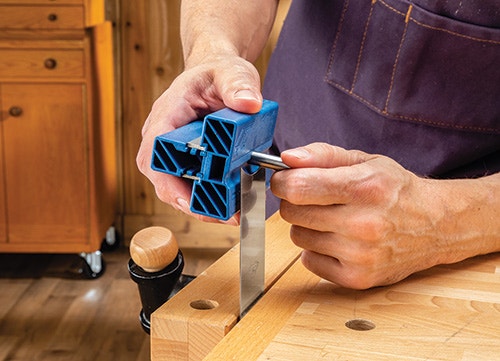
Finally, re-clamping the scraper vertically again transitions to the final stage of sharpening (Step 4 on the tool): rolling the burr down past the edge to orient it toward the scraper's face. Rockler has designed the fence used for turning the burr so it tips the burnishing rod about 10 degrees down from square, effectively "hooking" the burr to prepare it for use. Several strokes with moderate pressure along the edge are all it takes to finish the burr.
With a little practice, you can turn both edges of a scraper into four burrs in very little time. And that should help make scraping a more effective part of your general surface preparation process.
Keep the inspiration coming!
Subscribe to our newsletter for more woodworking tips and tricks
